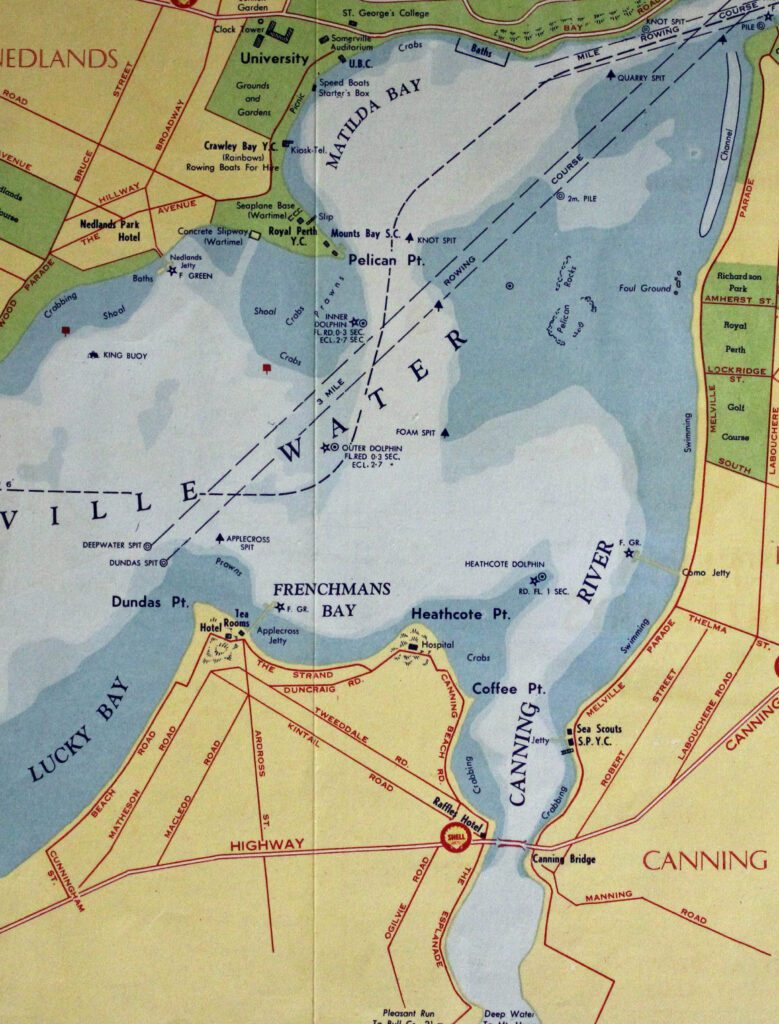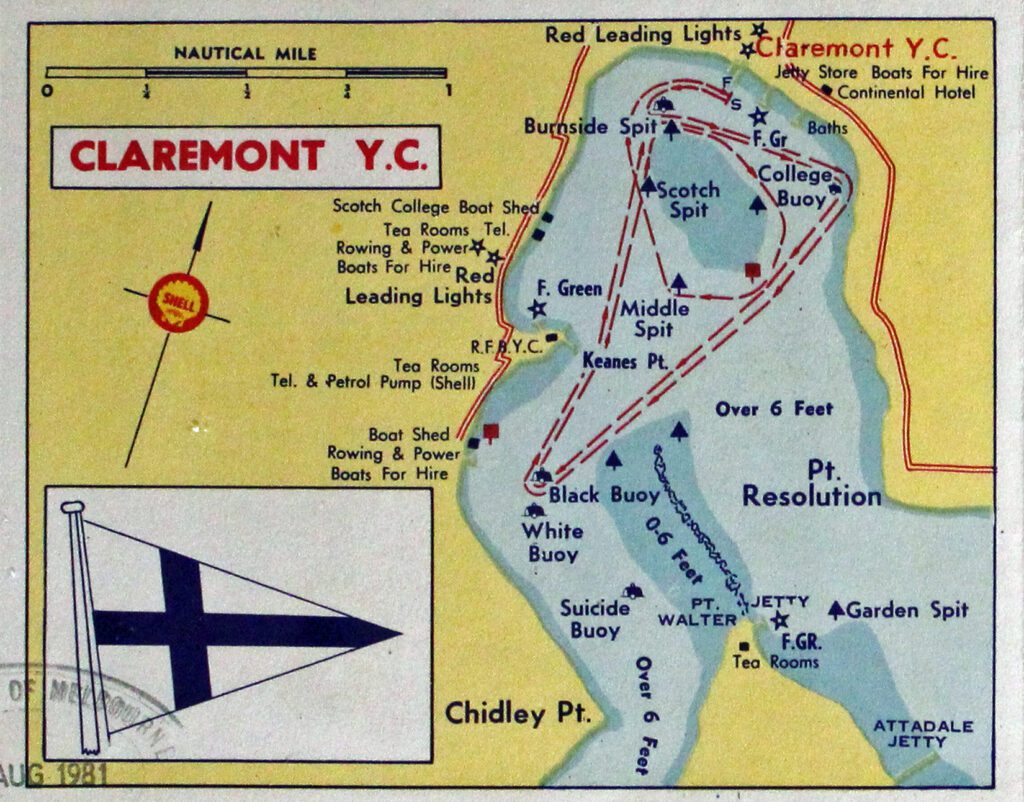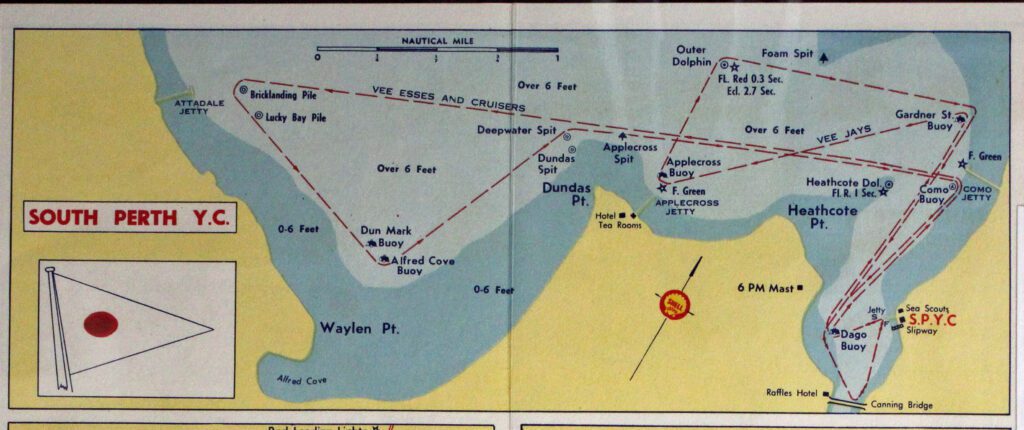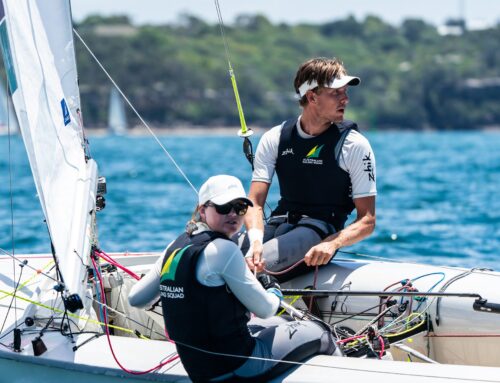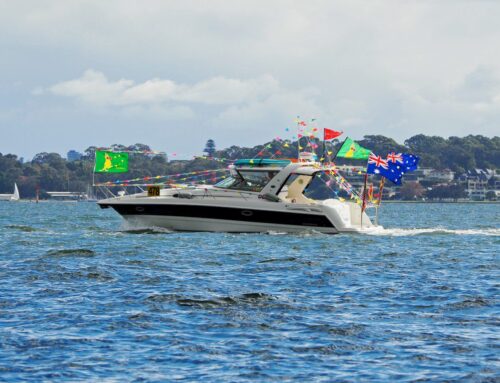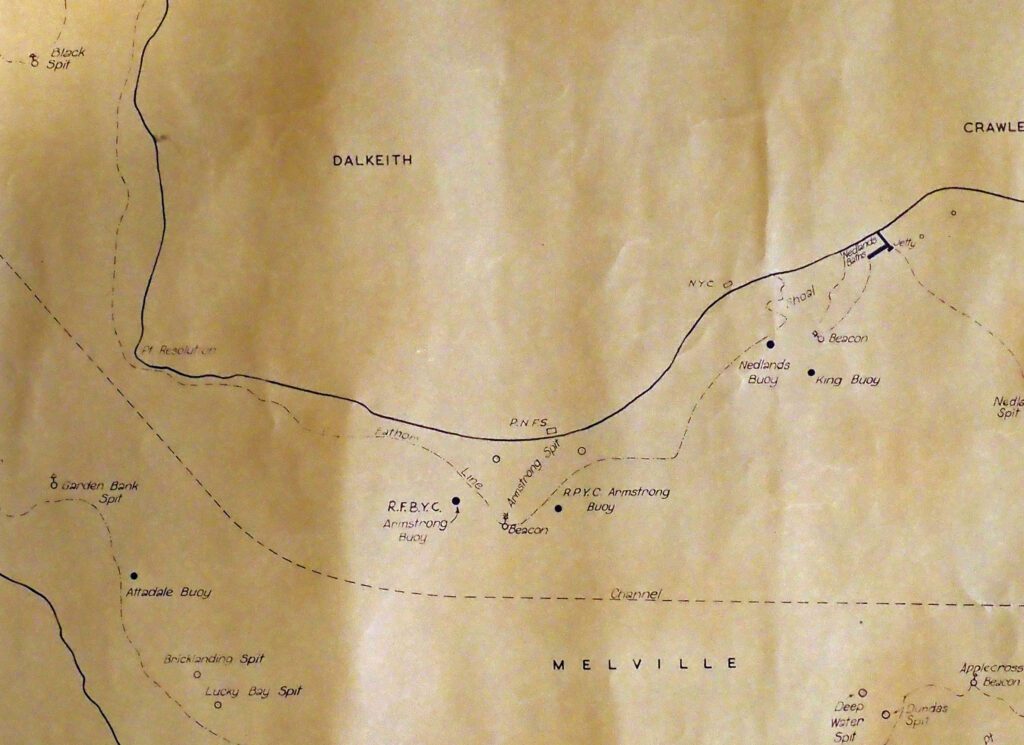
A River of Changes.
Courses and Marks: Part Two.
The names for the marks on the river have changed over the last 60 years or so, in fact even the positions of the marks have changed.
In a previous article, I discussed the changes in the names of the marks on the river over on the south side of the river and I was able to show some of the marks and their older names.
I had the luck to find an old Shell map from 1954 that clearly marked out the sailing courses that were used during that period and they were essentially for the VJ’s, the VS’ and the cruising section. Of course, we also got all the marks of the period as well as where the best places were for crabs and prawns on the river.
On the other side of the river to the north and not west, it was no different.
In the 1960-65 map, they had two Armstrong buoys, one on each side of Armstrong Spit near Flying Squadron. The western one was in the care of RFBYC and the one on the east side was in the care of RPYC. Fortunately, sanity held sway and the RFBYC buoy was renamed to Dome.
There were two Cement Spits, one in Freshwater Bay and one opposite Inner Dolphin on the other side of the channel. Eventually commonsense prevailed and the name of the one opposite Inner Dolphin was changed to Concrete. I’m prepared to bet that there was some friendly rivalry between the two Royal clubs over that one. The Freshie spit has since been renamed to Cornish spit.
King Buoy used to hang around over near the Nedlands Buoy on the north shore, but someone had a bright idea and renamed it Hall mark (not Hallmark) Yes, there was another Hallmark over near Lucky Bay Buoy but that’s now known as Attadale pile. Dunmark Buoy is now called Waterstrom Spit with Dee Road and Squadron buoys arriving, flowing into the southwest from Bond (Dundas).
Smith and Lucky buoys have arrived and they are the marks taken by boats going into Lucky Bay for the hair-raising ride down the sea breeze. On the other side of them are Bricklanding a and b with b acting as the very necessary separator for the wall of boats that thunder down on the mark on a Saturday. Yes; Lucky Bay spit is still there but it is now a mooring spot for the party boats during the summer.
Of course, we have to keep in mind some favourite sons of the river and there is no surprise to see the name Court mentioned, though it took over the name of Garden Bank spit. Another favourite son is commemorated by the placement of the hardest-to-find mark on the river; Sanders buoy, after Jon Sanders and his multiple circumnavigations of the seas and ocean of our world.
Suicide, now there’s a name for a mark. While I’m not very well qualified to speak on many of the marks around Freshwater and Mosman Bay, Suicide was a mark that used to hang around the southern side of Mosman Bay next to the prominence that pokes out of Point Walter. It was a diabolical mark on a low tide and was correctly named for the visitors from the Canning. It has been renamed Hobbs (after a well-known local architect and WW2 general). The name “Suicide” was relocated to a mark next to Mosman buoy and then discarded. A pity, as it offered a look at what sailing was like 70 years ago.
And that’s just a quick look at the changes on the river over the last 70 years. I’ve yet to explore some of the changes over toward Royal Perth and further up the river.
In the images on offer, we have the two Armstrong’s side by side from the map drawn in the early 1960’s and then of course a look at the sailing courses on offer from SoPYC in 1954. The Claremont Yacht Club sailing map shows you clearly where Suicide was till recently. The last image is of course where you could get a free feed of crabs and prawns, but that was a while ago now.
From the Archives
Rick Steuart
